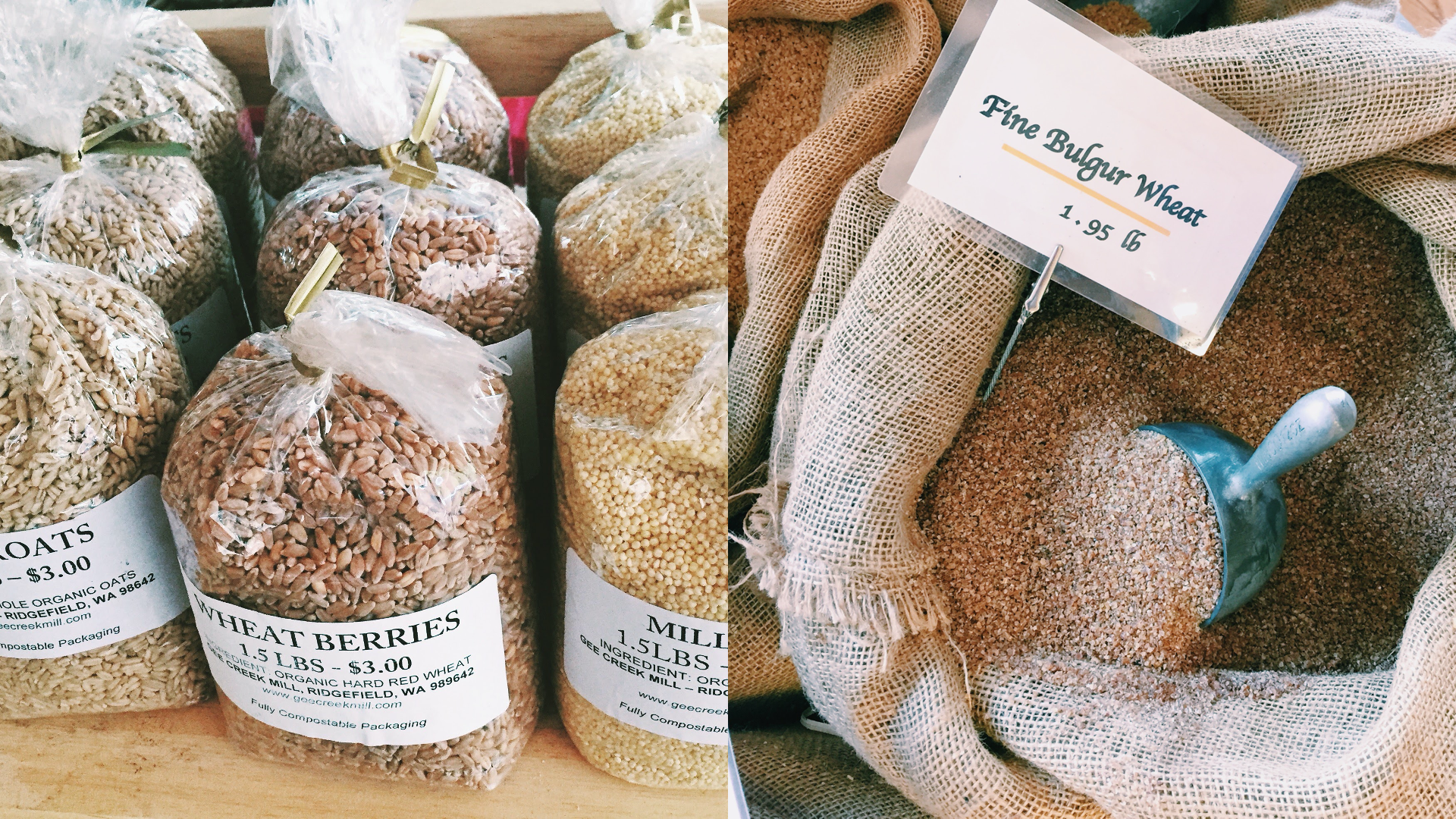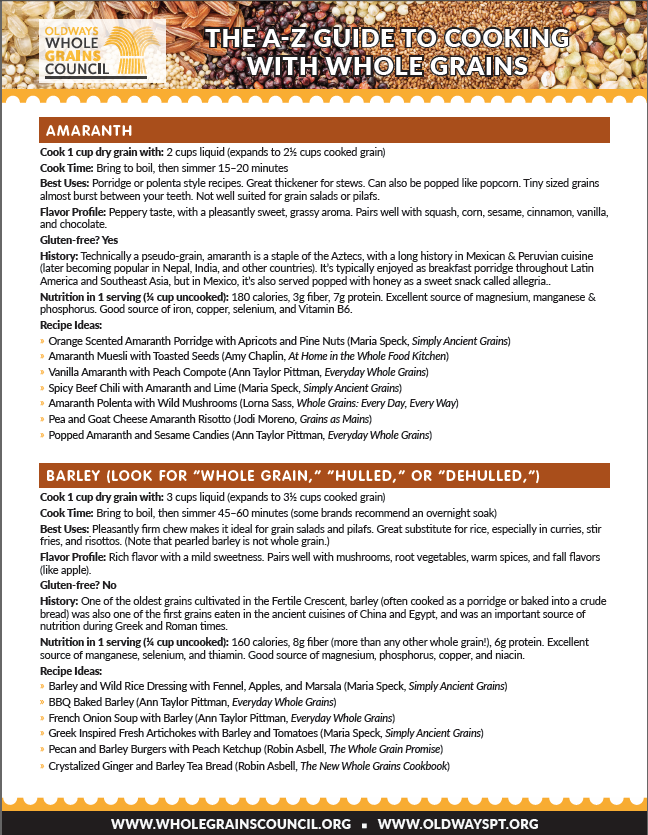Share This
Despite all of the fuss over gluten-free diets, some of the hottest whole grains in town, from farro to freekeh, are actually types of whole wheat. Because whole wheat contains all of its bran, germ, and endosperm, whole wheat is a whole grain. (However, not all whole grains are whole wheat, because there are many other whole grains like oats or quinoa.) Today, we’re going to explore the wonderful world of whole wheat, highlighting both modern and ancient wheat berries, as well as quicker cooking ground and cracked wheats.
Wheat Berries
Wheat berries are kernels of whole wheat. Typically the “wheat berries” we see at the store refer to kernels of Hard Red Winter Wheat, Hard Red Spring Wheat, or Soft Wheat. However, there are a number of other “ancient wheats” that are can be used interchangeably with wheat berries in recipes. While wheat berries traditionally take close to an hour to cook, you can cut the cook time down by using the “pasta method” of cooking or by using a rice cooker or pressure cooker. Some retailers also offer pre-cooked whole grains like farro or Kamut® in the freezer aisle or rice aisle that can be quickly microwaved or boiled.
- Einkorn is thought to be the most ancient of wheat varieties available today, with just two sets of chromosomes (instead of the typical six). This drought tolerant crop is being grown in Washington, and is sometimes known as farro piccolo (little farro) in Italy or petit épeautre (little spelt) in France.
- Farro is the Italian name for Emmer, an ancient wheat that traces its roots to the fertile crescent. Farro has a sweet nutty flavor and a delightful chew, making it a favorite choice of chefs. Be aware that farro is sometimes sold “pearled,” meaning that some of its healthful bran has been removed. To ensure you’re getting whole grain farro, look for the Whole Grain Stamp or the word “whole” on the ingredient list.
- Kamut® is another example of an heirloom grain, once pushed aside by an agricultural monoculture but now returning to add variety to the food supply. Brought back as a souvenir said to be from an Egyptian tomb, this wheat variety was peddled without much success at the Montana State Fair in 1960 as “King Tut’s Wheat.” Today, millions of pounds of this rich, buttery-tasting wheat are grown on organic farms and made into over 450 whole-grain products around the world.
- Spelt (known as farro grande, or big farro, in Italy) is another delicious ancient wheat that fell by the wayside when high-yielding modern wheats became commonplace. Today spelt is seeing a resurgence in popularity, and spelt flour is also lovely for baking.
Quicker-Cooking Wheat Pieces
To help reduce the cook time of wheat berries, some processors crack wheat kernels into smaller pieces (without removing the healthful bran or germ). A few of our favorite examples of quicker-cooking wheat pieces, for lack of a better term, are found below.
- Bulgur is a term for wheat kernels that have been pre-boiled and then ground into smaller pieces. Because bulgur has been precooked and dried, it needs to be boiled for only about 10 minutes to be ready to eat – about the same time as dry pasta. This makes bulgur an extremely nutritious fast food for quick side dishes, pilafs or salads.
- Freekeh is a hard wheat (often durum wheat) that is harvested when the plant is still young and green, then roasted and rubbed. This unique process gives freekeh its signature smoky flavor. Rumor has it that freekeh was discovered when an ancient village in the Eastern Mediterranean hurriedly picked young wheat before an attack on their city. Fire from the attack burnt the young wheat, but the people found that not only was this roasted young wheat fit to eat, it could be quite delicious. Similar to bulgur wheat, freekeh is often sold cracked into smaller, quicker-cooking pieces.
If you want to learn more about wheat’s history, production, and nutrition, check out our Grain of the Month feature. For cooking tips, download our A-Z Guide to Cooking with Whole Grains, pictured above right. (Kelly)



Add a Comment